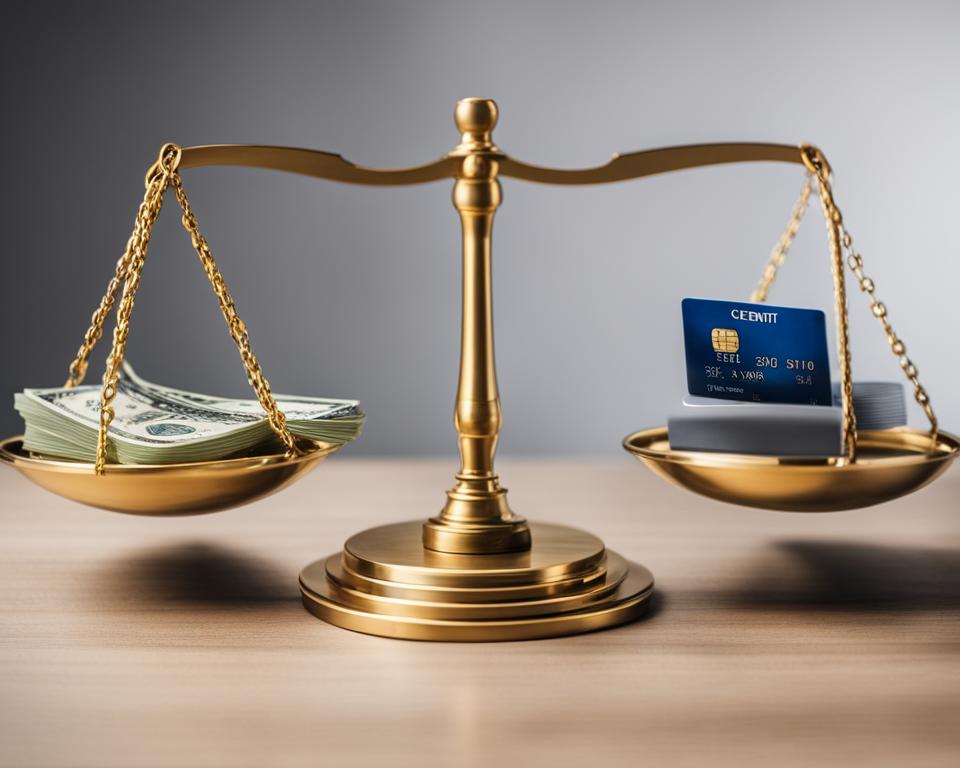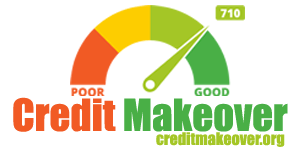As modern life presents an ever-evolving financial landscape, particularly in the post-coronavirus era, many Americans have found themselves reassessing their fiscal strategies. Rising inflation, fluctuating employment rates, and the ongoing quest for stability have significantly influenced financial decision-making. In this milieu, debt consolidation repayment plans have emerged as a beacon for those seeking to simplify payments and streamline payments, aiming to reduce financial strain effectively.
With sage advice from financial experts leaning towards the bolstering of emergency savings—a sum which could ideally cover three to six months of expenses—the pursuit of financial consolidation methods has gained traction. Personal loans from respected companies like SoFi, LightStream, or Happy Money suggest a feasible route, providing the means to manage high-interest credit card debt and break free from the debilitating debt cycle. By grouping various debts into a singular, manageable monthly payment, often at a more desirable interest rate, one can reclaim control over their financial situation.
Key Takeaways
- Debt consolidation streamlines multiple debt payments into one simplified monthly payment.
- Adopting financial consolidation methods can lead to lower interest rates and reduced money outflow over time.
- Consolidation often acts as a dual weapon to simplify budgeting while potentially improving credit scores.
- Financial experts recommend prioritizing saving for emergencies alongside debt repayment.
- Noteworthy companies providing personal loans for debt consolidation include SoFi and LightStream.
- Consolidation plans are a strategic pivot to better prepare individuals for unforeseen financial disruptions.
Understanding Debt Consolidation Repayment Plans
When it comes to managing outstanding credit card debt, debt consolidation repayment plans stand out as a strategic financial tool, designed to merge multiple high-interest debts into a single loan. This approach is not just about simplicity; it’s a comprehensive debt management strategy aimed at reducing monthly payments, securing lower interest rates, and establishing a clear path to becoming debt-free. Understanding the nuances of this process is key when navigating through various credit card consolidation options.
Debt consolidation helps streamline payments by converting several credit card bills, often with differing interest rates and due dates, into one manageable monthly installment. The consolidated loan typically comes with a fixed Annual Percentage Rate (APR) over its lifespan, making it easier for individuals to budget and plan their finances. This transition from multiple payments to a single one can lead to substantial interest savings and a more straightforward repayment process.
By consolidating credit card debt into one loan, individuals can focus on a single payment, potentially with more favorable terms, leading to financial relief and empowerment.
Lenders like traditional banks and peer-to-peer lending platforms such as SoFi and LendingClub have grown increasingly popular in providing these loans. However, it’s vital to note that while they help facilitate debt consolidation repayment plans, they differ significantly in their eligibility requirements. Credit score and debt-to-income ratio are typical considerations, but factors such as education and employment history might also play a role, especially in peer-to-peer lending scenarios.
| Lender Type | Interest Rate Range | Eligibility Criteria | Notable Features |
|---|---|---|---|
| Traditional Banks | Varies widely | Credit score, Debt-to-income ratio | Secure and established lending |
| Peer-to-Peer Platforms | Competitive rates | Credit score, Debt-to-income ratio, Education, Employment history | Flexible terms, tailored options |
It’s critical for borrowers to compare not just the rates but also the terms offered by each lender. Using this well-informed approach to select the right lender for their debt consolidation needs, individuals can set themselves on a promising path toward financial stability and peace of mind.
The Impact of High-Interest Credit Card Debt
The perils of high credit utilization rates are often overshadowed by the immediate benefits of credit card convenience. However, this short-term convenience comes at a steep price—the long-term costs of credit card debt. As credit card interest rates soar, debt mounts, and consumers find themselves entrenched in an inescapable financial quicksand.
Unpacking Interest Rates and Long-Term Costs
Picture this: an average American with a credit card balance of $6,194, faces an average interest rate of 16.6%. By making just the minimum payments, the debt spirals into an estimated $7,286 in interest alone over a span of more than 17 years. It’s a startling revelation that underscores the urgent need for effective debt relief solutions that minimize these long-term costs and liberate consumers from the shackles of indebtedness.
Strategies for Avoiding High Credit Utilization
To combat high credit utilization, financial experts advocate for a proactive approach. By opting for the best debt repayment plans available, such as consolidating credit card debt through a low APR personal loan, individuals can significantly cut down on the accrued interest. Additionally, embracing shorter loan terms when feasible serves to further contain the total interest paid, thereby helping maintain a healthier credit utilization ratio. Peer-to-peer lending stands out as a promising alternative, offering the flexibility to tailor financial solutions to individual needs.
Ultimately, an informed and strategic approach towards credit utilization doesn’t just ease the present financial burden—it paves the way for enduring financial wellness.
Personal Loan vs. Credit Card Consolidation: A Comparison
When weighing loan consolidation choices, understanding the nuances between personal loans and credit card consolidation is crucial for making an informed financial decision. Both options serve as popular financial consolidation methods, but they cater to different financial circumstances and needs.
Balance transfers and personal loans offer distinct pathways to managing and consolidating debt. However, consumers often find themselves pondering over credit card consolidation options that can affect their credit standing and long-term financial health profoundly. Below is a detailed comparison of these two debt consolidation strategies.

| Feature | Personal Loan | Credit Card Consolidation |
|---|---|---|
| Interest Rate Type | Fixed | Can be 0% during introductory period then variable |
| Approval Criteria | Credit score, income, debt-to-income ratio | Often requires good to excellent credit |
| Fees | May have origination or closing fees | Balance transfer fees; potential for late fees |
| Repayment Term | Fixed term (e.g., 3-5 years) | Flexible, but must manage before end of promotional period |
| Impact on Credit Score | Can improve by consolidating multiple debts into one | May increase if credit utilization is decreased |
| Long-term Financial Management | Potentially lower cost over time | Risks of APR increase after promotional period |
| Suitability | For paying off multiple high-interest debts | For those who can repay quickly and benefit from 0% APR offer |
A balance transfer credit card may initially seem like an attractive choice due to the allure of a 0% APR offer. Nevertheless, it’s imperative to be mindful of the balance transfer fees and the variable APR that typically applies post-promotion. This option is best suited for individuals who are confident in their ability to repay their consolidated debts within the introductory period.
On the other hand, personal loans offer the stability of a fixed interest rate, along with a clear repayment timeline. This can provide peace of mind and assist in avoiding the potential pitfalls of a variable APR that comes into effect after an introductory credit card offer expires. Additionally, transitioning from high-interest credit card debts to a single personal loan often results in a lower credit utilization ratio, potentially leading to an improved credit score.
In conclusion, consumers contemplating loan consolidation choices should carefully consider their ability to manage payments within the structures offered by personal loans and credit card consolidation. The ultimate goal is to select the method that aligns with individual financial goals and offers a feasible route towards debt freedom.
Exploring Loan Consolidation Choices
As borrowers navigate the process of enhancing their financial health, understanding the nuances between different types of loan consolidation becomes imperative. The ability to consolidate debt effectively hinges upon an informed choice, particularly between secured personal loans, unsecured personal loans, and options such as peer-to-peer lending. Each offers distinct benefits and conditions tailored to the borrower’s situation.
Secured vs. Unsecured Personal Loans
Debt consolidation repayment plans frequently involve deciding between secured personal loans and unsecured personal loans. Secured loans typically require some form of collateral, such as a home or a car, which the lender can claim if the borrower defaults on the loan. This collateral aspect tends to lower the risk for lenders, often resulting in more favorable interest rates for the borrower. On the contrary, unsecured loans do not require any collateral but may come with higher interest rates, as the risk for the lending institution is greater without any guarantee aside from the borrower’s promise to repay.
Traditional Banks versus Peer-to-Peer Lending
Traditional banks offer a traditional route for obtaining consolidation loans, often accompanied by stringent eligibility requirements that focus on credit scores and financial history. Conversely, peer-to-peer lending platforms, like Upstart, bring a more personalized facet to borrowing. These platforms may assess additional factors, such as the borrower’s education and employment history, offering potentially more flexible repayment plans, especially for individuals whose credit history might not tell the full story.
To illustrate the differences, consider the following comparison:
| Loan Type | Secured Personal Loan | Unsecured Personal Loan | Peer-to-Peer Loan |
|---|---|---|---|
| Collateral Required | Yes | No | No |
| Typical Interest Rates | Lower | Higher | Varies |
| Eligibility Criteria | Strict | Varied | Flexible |
| Risk of Asset Loss | High | Low | Low |
| Approval Process | Longer | Shorter | Varies |
In summary, whether opting for a secured or unsecured personal loan, or exploring peer-to-peer lending, borrowers should weigh the trade-offs and terms offered to secure the most beneficial debt consolidation repayment plan.
The Role of Balance Transfer Cards in Debt Consolidation
When seeking relief from high interest credit card debt, balance transfer cards emerge as a potent tool within debt consolidation repayment plans. By offering an introductory promotional APR, these cards allow individuals to consolidate existing debt and capitalize on lower interest rates.
Identifying the Best Balance Transfer Offers
To leverage the most advantageous balance transfer offers, consumers should meticulously evaluate the terms associated with each card. Factors such as the length of the promotional period, the standard APR after the promotional phase, and balance transfer fees can significantly influence the overall benefit of completing a balance transfer.
Navigating Promotional APR and Transfer Fees
Understanding the particulars of promotional APR periods and associated balance transfer fees is critical. It’s essential for consumers to navigate the introductory offers with a plan to repay debt before the expiration of the low-interest phase, thus avoiding potential rate spikes and maximizing the overall utility of balance transfer cards.
To provide a clearer picture, consider the following comparison:
| Card Features | Offer A | Offer B |
|---|---|---|
| Promotional APR | 0% | 0% |
| Duration of APR | 18 months | 12 months |
| Balance Transfer Fee | 3% | No fee |
| Standard APR after Promotion | 14.99% | 19.99% |
Armed with this information, individuals can select the balance transfer card that best suits their financial situation and repayment strategy.
Debt Consolidation as a Credit Score Improvement Strategy
For many Americans, navigating through the maze of credit repair can be a daunting task. Among the various techniques available, debt consolidation has emerged as a powerful tool to boost financial health and improve credit scores. This method is not just a way to simplify debt payments and potentially reduce interest rates but also a strategic approach to reshaping one’s credit report.

Understanding Credit Utilization and Its Effect on Credit Scores
Credit utilization plays a pivotal role in the calculation of credit scores. It is a measure that represents the amount of credit you are using compared to how much you have available. High credit utilization can signal to lenders that you are over-reliant on credit, which can negatively affect your credit score. By consolidating your debts, you can not only manage your finances with greater ease but also lower your overall credit utilization, potentially leading to an improved credit score.
Maintaining Positive Payment History After Consolidation
Once debts have been consolidated, it is crucial to focus on maintaining a positive payment history. On-time payments are a critical factor in the credit scoring system. A debt consolidation loan can simplify this process by reducing the number of payments you need to remember each month. As you continue to make timely payments, you further establish yourself as a responsible borrower, which can contribute significantly to your aim to improve your credit score. Adequate debt management strategies, coupled with a solid record of punctual payments, can therefore serve as a foundation for a sterling credit reputation.
How to Choose the Best Debt Repayment Plans
Choosing the optimal debt repayment plan is pivotal for long-term financial stability. To ensure that you embark on the most effective path, several key factors must be meticulously evaluated to secure a plan that aligns with your financial health and goals.
Analyzing Your Debt-to-Income Ratio
Before selecting a debt repayment plan, it’s essential to analyze your debt-to-income (DTI) ratio. This financial benchmark compares your monthly debt payments to your monthly income. A lower DTI indicates a more manageable debt load, making you a more attractive candidate for favorable loan terms. Understanding your DTI ratio is the first step toward choosing a repayment plan that will work best for you, ensuring that you’re not stretching your finances too thin.
Assessing Loan Terms and Interest Rates
When looking into the best debt repayment plans, the loan terms are a crucial factor. The duration of the loan impacts the monthly payment amount and the total interest paid over time. Shorter loan terms usually lead to higher monthly payments, but less interest paid in the long run. Conversely, longer loan terms can ease monthly payments but accrue more interest over time. Interest rate assessment is equally important; a lower interest rate can significantly reduce the total cost of your debt.
Peer-to-peer lending platforms offer a modern twist, often providing personalized loan terms and interest rates that could be more advantageous based on your unique financial situation. Here is a comparative overview of standard loan terms and how they might affect your debt repayment strategy:
| Loan Term | Monthly Payment | Total Interest Paid |
|---|---|---|
| 5 years | Higher | Lower |
| 10 years | Moderate | Moderate |
| 15+ years | Lower | Higher |
Delving into these aspects will navigate you toward a repayment plan that offers the best balance between monthly budget constraints and overall financial savings. By incorporating an interest rate assessment, analyzing your debt-to-income ratio, and understanding various loan terms, you’ll be poised to make an informed decision tailored to your financial well-being.
Benefits of Using Debt Repayment Calculators
Financial strategizing becomes more efficient with the use of debt repayment calculators. These calculators are essential for those considering debt consolidation repayment plans, as they can significantly streamline payments and paint a clear picture of the potential savings and repayment period modifications. By providing an interactive overview of one’s debt situation, repayment calculators empower individuals to make informed decisions on managing their financial obligations.
Debt repayment calculators work by inputting various loan terms and interest rates, offering a dynamic exploration of different scenarios. Such tools are not only practical but also enable prospective consolidators to estimate the outcome of various consolidation options on their monthly budget and long-term financial health.
The table below demonstrates how debt repayment calculators can compare different consolidation loan options:
| Loan Option | Interest Rate | Loan Term | Monthly Payment | Total Interest Paid |
|---|---|---|---|---|
| Consolidation Loan A | 10% | 5 years | $212 | $2,720 |
| Consolidation Loan B | 12% | 3 years | $332 | $1,952 |
| Balance Transfer | 0% (introductory) | 1.5 years | $555 | $0 (within intro period) |
These calculators provide not only numerical insights but serve as a practical guide for negotiating more favorable terms. They can reveal the true cost of seemingly small differences in interest rates or loan duration, emphasizing the importance of scrutinizing all aspects of debt consolidation repayment plans. The goal is not only to reduce immediate financial outlay but also to ensure a sustainable path to debt freedom while avoiding cost traps in the long run.
Navigate Financial Crunch with Debt Consolidation
During times of economic uncertainty, many find themselves grappling with a financial crunch. Debt consolidation becomes a key strategy, enabling people to consolidate debts efficiently and alleviate the pressure of multiple debt obligations. By combining various high-interest debts into a single, more manageable loan, individuals can streamline their finances and focus on a singular repayment plan.

Debt consolidation during financial crunch is not just about overcoming immediate financial stress—it’s a step towards long-term financial health. By opting for this strategy, consumers can potentially save on interest charges and enjoy the simplicity of one monthly payment. The overarching goal is to make financial management more accessible and less burdensome during tough economic times.
The goal of financial consolidation methods is not only to make debt more manageable but also to empower people to regain control over their financial destinies.
To illustrate the impact of debt consolidation, consider the following comparative analysis:
| Before Consolidation | After Consolidation |
|---|---|
| Multitude of high-interest debts | Single, lower-interest loan |
| Multiple monthly payments & due dates | One monthly payment & due date |
| Varying interest rates | Fixed or reduced interest rate |
| Complex financial tracking | Simplified financial oversight |
| Increased strain on budgeting | Improved budget management |
Utilizing financial consolidation methods during a financial crunch is more than a mere procedural shift. It signifies a proactive step in reshaping one’s financial landscape, creating a pathway to stability, and ultimately, financial peace of mind.
From Debt Consolidation to Financial Empowerment
The journey financial empowerment often begins with decisive steps towards managing debt. One compelling strategy that promises both psychological relief and financial clarity is the utilization of debt consolidation benefits. Not only does this method streamline multiple payments into one, but it also sets the groundwork for a comprehensive, strategic approach to achieving lasting fiscal health.
When an individual chooses to consolidate their debts, they’re not just simplifying their monthly obligations—they’re reclaiming their financial autonomy. With a clear and singular focus on one manageable payment, stress levels often decrease significantly, paving the way for a stable and proactive financial future.
Here’s how this choice can help pave a path toward financial consolidation methods that enable savvy financial maneuvers and sound decision-making:
- Enhanced budget management due to a streamlined payment schedule
- Reduced interest rates save money over time, potentially freeing up cash for savings and investments
- Lowered credit utilization ratio, which can positively affect credit scores
- The structured nature of a consolidated loan brings predictability and order to one’s finances
To further illustrate this transformation, consider the following example:
| Before Debt Consolidation | After Debt Consolidation |
|---|---|
| Multiple credit card payments with varying interest rates | Single loan with a fixed interest rate |
| High-stress levels due to multiple deadlines and bills | Reduced stress with one monthly due date |
| Diverse loan terms and repayment schedules | One loan term, one repayment plan |
| Challenging to develop a consistent saving strategy | Easier to budget and save with predictable payments |
Ultimately, debt consolidation is more than a financial transaction—it’s a stepping stone to empowerment. With the right strategic planning, individuals can navigate through their financial landscape with confidence, armed with the tools they need for a prosperous and debt-free future.
Pros and Cons of Home Equity in Debt Consolidation
Tapping into home equity can be a seductive debt consolidation option for homeowners swimming in various high-interest debts. It’s touted for its ability to reduce the overall interest burden through lower rates. However, it also brings into play the risk associated with collateralized loans. Below, we present a balanced exploration of how leveraging home equity can impact debt management strategies.
Consolidating debt by drawing on home equity — through either a fixed-term loan or a line of credit — presents an array of compelling advantages. The crux being significantly lower interest rates compared to traditional credit cards or unsecured loans, which in turn can lead to substantial savings over the life of the debt. This strategy can streamline multiple debt payments into a single, manageable monthly payment.
Yet, as with any form of debt restructuring, there are pertinent cons to consider. The most considerable risk surfaces when the home itself guarantees the consolidated loan. Should financial circumstances change, resulting in an inability to service the loan, the consequences could include the loss of the home to foreclosure. This underscores the necessity of a well-thought-out repayment plan before utilizing home equity.
| Pros of Home Equity for Debt Consolidation | Cons of Home Equity for Debt Consolidation |
|---|---|
| Lower interest rates compared to other credit options | Puts the homeowner’s property at risk in case of default |
| Consolidated payment simplifies debt management | Potential for foreclosure if unable to maintain payments |
| Possibility to deduct interest payments on tax returns | Requires disciplined financial management to avoid future debt |
| Can improve credit profiles by reducing credit utilization | Lengthy application process with rigorous financial scrutiny |
To encapsulate, leveraging home equity for consolidating debt bears its share of pros and cons. Homeowners intent on this path should approach with caution and arm themselves with a robust debt management plan. Seeking guidance from financial professionals is crucial to navigate the intricacies of using home equity as a debt consolidation apparatus.
Alternative Debt Relief Solutions: Beyond Consolidation
When the journey to financial freedom seems daunting, and traditional debt consolidation is not a viable option, several alternative debt relief solutions can offer a lifeline to those struggling with debt. Understanding these debt consolidation alternatives and financial consolidation methods can be the key to unlocking a more manageable financial future without accruing new loans.
A prominent strategy for those looking to avoid taking on additional loans is enrolling in a debt management plan (DMP). Typically facilitated by credit counseling agencies, DMPs can reduce your payments through negotiated lower interest rates and waived fees, allowing you to pay off your debt through affordable monthly sums over a set period.
For those in more dire financial straits, debt settlement may be a consideration. Here, companies negotiate with creditors on your behalf to settle your debts for less than the amount owed. While it can potentially reduce debt amounts, it may also negatively impact your credit score and involves fees and financial risks that require thorough consideration.
- Credit Counseling: Experts provide personalized advice on managing your money and debts, help you develop a budget, and offer free educational workshops and resources.
- Bankruptcy: As a last resort, declaring bankruptcy can offer a fresh start for those unable to repay debts, albeit with long-term negative implications for your credit score.
Choosing the right path requires careful evaluation of your financial situation and a clear understanding of the repercussions associated with each option. Seeking advice from financial professionals can help steer you towards the most suitable course of action for your unique circumstances.
Consolidate Debts Efficiently: Tips and Tricks
For many Americans, debt is not just a financial burden, but a constant source of stress. Learning how to consolidate debts efficiently is essential for financial freedom and peace of mind. Whether you’re juggling multiple credit card balances or seeking ways to deal with various debts, there are proven debt consolidation tips and credit card consolidation strategies that can streamline the repayment process.
Balance transfers and personal loans are popular methods to consolidate high-interest credit cards, but it’s important not to overlook the potential of home equity lines for those who have built up sufficient equity. The choice among these should be guided by careful comparison of the rates, terms, and fees they entail.
- Analyze your current debts and interest rates.
- Shop around for the best consolidation loan or balance transfer offer.
- Read the fine print: understand all fees and charges.
- Build a realistic budget and stick to it post-consolidation.
- Avoid using credit excessively once your debts are consolidated.
Maintaining a proactive approach post-consolidation is equally vital. Avoiding the trap of accruing new debts requires discipline and a solid budget plan. It’s also helpful to monitor your credit score and reports to ensure that your consolidation moves are positively impacting your financial profile.
Approach debt consolidation as a component of your broader financial strategy, not just a quick fix.
Remember, the ultimate goal is to create a sustainable financial situation. There is no one-size-fits-all approach, but with due diligence and the right set of strategies, you can pave your path toward a debt-free life.
Conclusion
In the course of mitigating financial pressures, debt consolidation repayment plans have proven to be a practical financial consolidation method. They are tailored to streamline finances by converging various high-interest debts into one manageable loan with potentially lower interest rates. Furthermore, this consolidation strategy facilitates a consistent payment routine, often resulting in improved credit scores due to lowered credit utilization ratios.
Crucial to the process is a robust review of personal financial standing before venturing into consolidation. Exploring the range of available options, be it personal loans or balance transfer cards, and ultimately selecting the most fitting approach demands discernment and precision. Considering such financial rearrangements as steps on a path to broader financial empowerment underscores the significance of careful planning and conscientious decision-making.
To ensure efficient debt management, individuals must approach consolidation as more than a mere quick fix. It should be regarded as a component of a comprehensive financial strategy, aimed at sustained financial health. With a judicious application of consolidation techniques and a forward-looking mindset, one can achieve a more streamlined financial portfolio, easing the burden of debt and paving the way towards fiscal stability.
FAQ
What are debt consolidation repayment plans?
Debt consolidation repayment plans are financial strategies that combine multiple debts into a single loan with the aim to streamline payments, simplify financial management, and potentially reduce interest rates and monthly payments, ultimately lessening financial strain.
How can debt consolidation help manage high-interest credit card debt?
Debt consolidation can help manage high-interest credit card debt by consolidating several high-rate debts into one lower-rate loan, reducing long-term costs, and providing a structured repayment plan that can be easier to manage.
What’s the difference between personal loan consolidation and credit card consolidation?
Personal loan consolidation involves taking out a new loan to pay off multiple debts, typically with a fixed interest rate and term. Credit card consolidation can involve transferring multiple credit card balances to a new card with a lower or 0% introductory APR, but this may only offer short-term relief if the balance isn’t paid off before the promotional period ends.
What are the advantages of using a peer-to-peer lending platform for debt consolidation?
Peer-to-peer lending platforms can offer more personalized loan options than traditional banks, considering factors beyond credit score, like education level and job history. They may also offer a more straightforward application process, competitive interest rates, and flexible loan terms.
How do balance transfer cards work in the context of debt consolidation?
Balance transfer cards allow you to transfer existing credit card balances to a new card with a lower introductory APR, often 0%. This can help save on interest costs and consolidate payments into one. However, it’s essential to handle the balance before the promotional APR expires to avoid high rates.
Can consolidating debts improve my credit score?
Yes, consolidating debts can improve your credit score by reducing your credit utilization ratio, consolidating multiple accounts into a single account, and helping you maintain a positive payment history through more manageable monthly payments.
What factors should I consider when choosing the best debt repayment plan?
When choosing the best debt repayment plan, consider your debt-to-income ratio to determine affordability, loan terms such as the length and whether the interest rate is fixed or variable, and the total interest rate, which affects the overall cost of the loan.
How do debt repayment calculators assist in making informed consolidation choices?
Debt repayment calculators help by providing detailed forecasts of monthly payments, interest savings, and debt payoff timelines based on various interest rates and terms, which aids in comparing loan consolidation choices and deciding the most cost-effective options.
What should I focus on during a financial crunch to manage debts effectively?
During a financial crunch, focusing on consolidating high-interest debts can help manage payments more efficiently. It’s important to consolidate debts to lower the interest rate and monthly payments, making it easier to keep up with obligations and potentially build emergency savings.
How does debt consolidation lead to financial empowerment?
Debt consolidation can lead to financial empowerment by reducing multiple debts into one manageable monthly payment. This simplification can alleviate stress, provide psychological relief, and allow individuals to focus on long-term financial planning and stability.
What are the benefits and risks of using home equity for debt consolidation?
Using home equity for debt consolidation can offer benefits such as lower interest rates compared to other forms of borrowing. However, it comes with the risk of putting your home as collateral, potentially leading to foreclosure if you default on the loan.
Are there alternatives to consolidation for debt relief?
Yes, alternatives to consolidation for debt relief include debt management plans, settlement, or counseling services. These alternatives often work by setting up structured repayment plans or negotiating with creditors to reduce the owed amount or interest rates.
What strategies can help me efficiently consolidate my debts?
Strategies for efficient debt consolidation include understanding all available options, seeking competitive rates, avoiding new debt accumulation post-consolidation, and opting for no or low-fee loans. It’s also beneficial to get pre-qualified for loans to see where you stand before making decisions.





